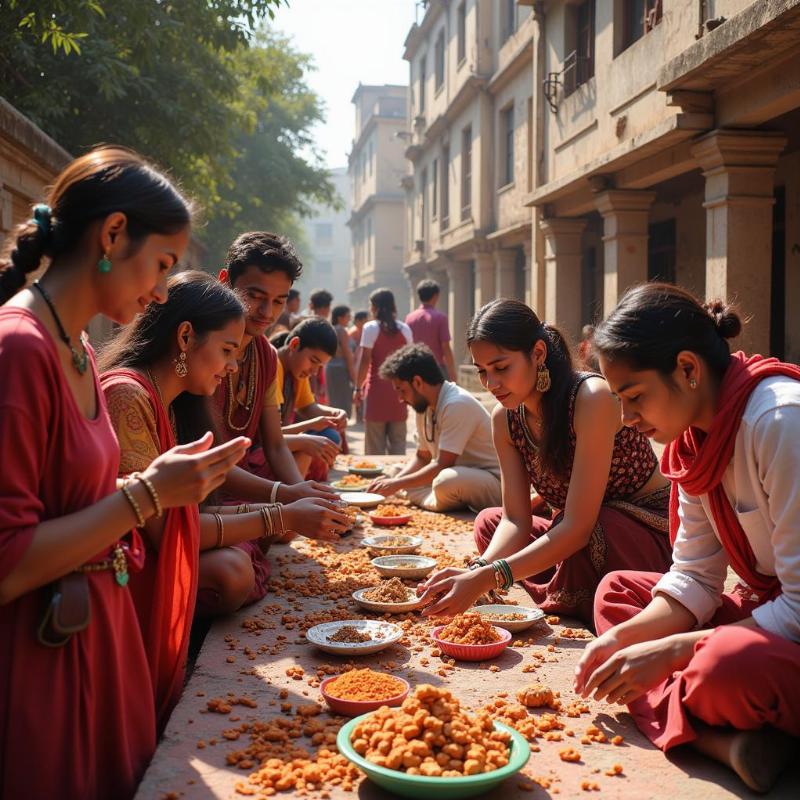Tourism in India is a vast and vibrant sector, playing a crucial role in the country’s economy and cultural exchange. Understanding its nuances is vital not only for travelers but also for those preparing for the UPSC exam. This essay delves into the multifaceted aspects of tourism in India, exploring its potential, challenges, and the path towards sustainable growth. We will examine the historical significance, economic impact, and socio-cultural implications of tourism, providing a comprehensive overview for aspiring civil servants and anyone interested in this dynamic field.
The Historical Significance of Tourism in India
India’s rich history and diverse cultural heritage have always attracted travelers from across the globe. From ancient pilgrims seeking spiritual enlightenment to medieval traders exploring the Silk Route, India has been a crossroads of civilizations. The Mughal era left behind magnificent architectural wonders like the Taj Mahal, while the colonial period saw the development of hill stations and infrastructure. This historical tapestry forms the backdrop for modern tourism, offering a unique blend of ancient traditions and contemporary experiences.
The Economic Impact of Tourism in India
Tourism contributes significantly to India’s GDP, generating employment and foreign exchange. It supports various ancillary industries like hospitality, transportation, and handicrafts. The growth of tourism also fosters infrastructure development in both urban and rural areas, leading to improved connectivity and facilities. However, the economic benefits need to be distributed equitably, ensuring that local communities also participate in the tourism economy. This requires careful planning and sustainable tourism practices.
Socio-Cultural Implications of Tourism in India
Tourism has a profound impact on the socio-cultural fabric of India. It promotes cultural exchange, fosters understanding between different communities, and preserves traditional art forms. However, it also presents challenges like commodification of culture, environmental degradation, and social disruption. Balancing the benefits of tourism with its potential negative impacts requires a sensitive and nuanced approach.
 Cultural Exchange Through Tourism in India
Cultural Exchange Through Tourism in India
Sustainable Tourism: The Way Forward
Sustainable tourism is crucial for ensuring the long-term viability of the tourism sector in India. This involves minimizing the environmental footprint of tourism activities, promoting responsible tourism practices, and empowering local communities. Eco-tourism, rural tourism, and community-based tourism are some of the approaches that can contribute to sustainable development.
How can we promote sustainable tourism in India?
By implementing policies that prioritize environmental protection, community participation, and responsible tourism practices. This includes promoting eco-friendly accommodations, encouraging local businesses, and educating tourists about sustainable travel.
What are the challenges to sustainable tourism in India?
Some of the key challenges include lack of awareness, inadequate infrastructure, and conflicting interests between stakeholders. Addressing these challenges requires a collaborative approach involving government agencies, local communities, and the tourism industry.
Conclusion
Tourism in India holds immense potential for economic growth and cultural exchange. However, sustainable development is crucial for ensuring that tourism benefits all stakeholders and preserves the country’s rich heritage for future generations. By addressing the challenges and embracing sustainable practices, India can unlock the full potential of its tourism sector and create a truly enriching experience for both visitors and local communities.
FAQ
- What are the major tourist attractions in India? The Taj Mahal, the Red Fort, the Ajanta and Ellora Caves, and the beaches of Goa are some of the most popular tourist destinations in India.
- What is the best time to visit India? The best time to visit India depends on the region and the type of experience you are seeking. The winter months (October to March) are generally considered ideal for most parts of the country.
- What are the visa requirements for visiting India? Most foreign nationals require a visa to enter India. You can apply for an e-visa online or through the Indian embassy in your country.
- What are some tips for traveling in India? Respect local customs, dress modestly, bargain respectfully while shopping, and be prepared for crowds and diverse cultural experiences.
- What are the major languages spoken in India? Hindi and English are the official languages of India. However, there are numerous regional languages spoken across the country.
PlaTovi, the leading travel company specializing in crafting unforgettable experiences in India, offers comprehensive tour packages, hotel bookings, flight reservations, and personalized travel solutions tailored to your preferences. Whether you seek a traditional tour encompassing sightseeing, dining, and shopping, or a unique cultural immersion, PlaTovi is your one-stop solution. Contact us at [email protected] or call us at +91 22-2517-3581 to start planning your dream Indian adventure.